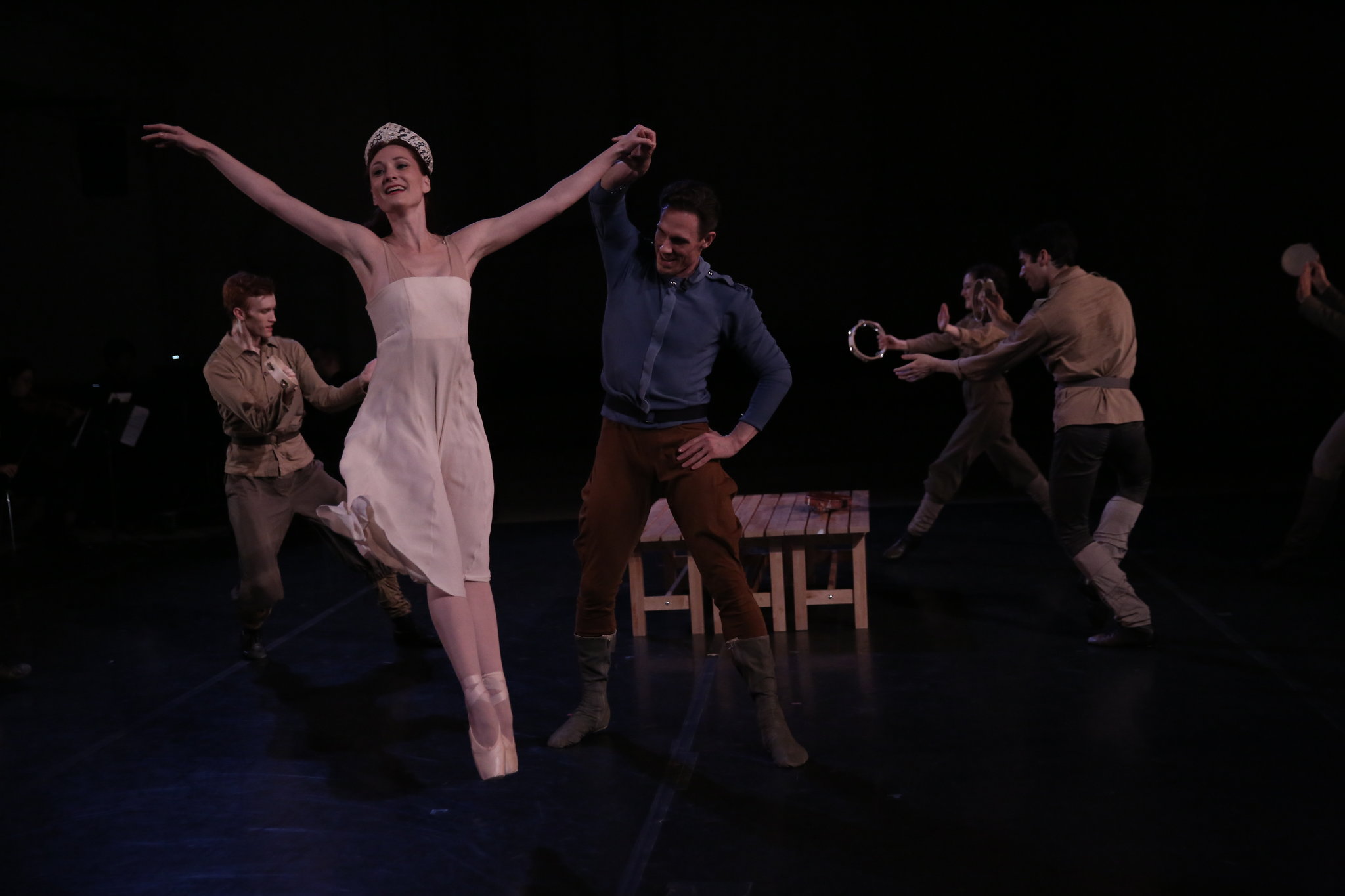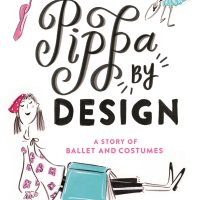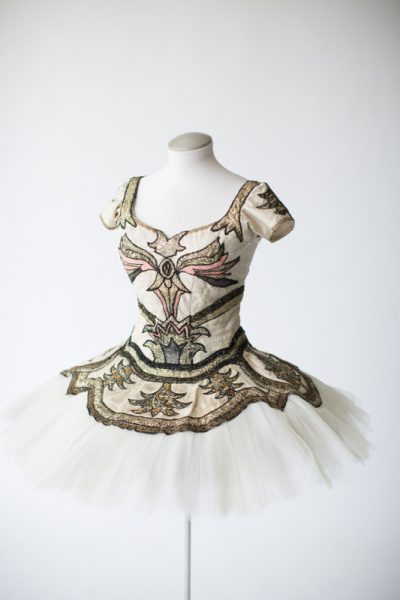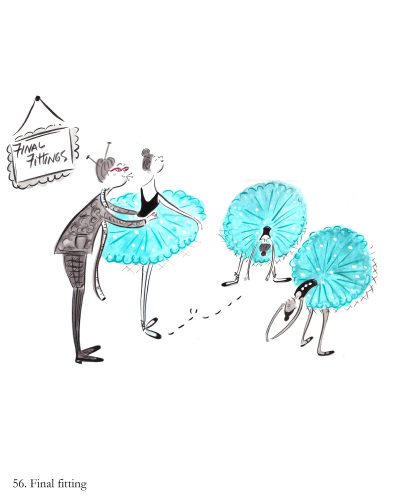Pippa By Design: A Story of Ballet and Costumes


Eleven year old Pippa wants us to know that she is easily bored by many things: soccer, theater and swimming never held any interest for her, and she wouldn’t be caught dead in a dance class like her ballet-obsessed older sister, Verity, who studies at the National Ballet of Canada in Toronto.
Pippa also wants us to know she is a budding artist and her passion is sketching fashion. A major fan of a reality television show called Off The Rack, which sounds a lot like Project Runway, she fills her beautiful blue sketchbook with loads of fancy dress designs. It would be her greatest dream to be on a show like that and to be given an opportunity to work with famous fashion designers.
When Verity is chosen to be a supernumerary for “Sleeping Beauty” with her friends Noelle and Enid, Pippa is happy for her but inwardly groaning that her sister will once again be the center of attention. She dives into her sketching and tries not to let her status as second-fiddle overwhelm her.
A single misstep, however, changes Pippa’s life forever: one day she accidentally leaves her beloved sketchbook at the dance studio and when she returns the next day to retrieve it, it’s gone! No one has seen it, not even Ida at the front desk who knows everything.
But then…it is magically returned with a note from a “secret admirer.” Pippa is thrilled to have the book back and equally excited when the admirer turns out to be the head of the dance company’s wardrobe department, who invites her to learn more about costume design. Fabulous!
Throughout the rest of the book, we learn as Pippa learns:

~the history of tutus 
~the design of costumes
~the various personnel who design, fit, and build the costumes
We learn techniques and terms, do’s and don’ts. We even learn the names and stories of influential costume designers through the ages, which is fascinating and much-deserved knowledge to share with readers.
How often do we hear the names of costume designers, unless they are also famous in the world of fashion? A proper costume is critical for a dancer to perform in, for the audience to relate to, for a set to be designed around, yet the general public doesn’t often know who designed it and who created it.

Not a children’s picture book, Pippa By Design nonetheless has both charming illustrations and actual photographs which really help bring to life the education Pippa and the reader are getting. The book’s audience is technically readers age 7-10 which makes this a middle-grade book, but a parent could easily read this with their younger child, especially if they already have an interest in ballet, art, or costumes. Readers older than 10 might also enjoy the design and history lessons.
We also learn some history of the “Sleeping Beauty” ballet itself, including the changes Rudolf Nureyev made when he choreographed it for the National Ballet of Canada in 1972. He gave the production (and himself) two new male solos. Nureyev’s costume designer, Nicholas Georgiadis, even mined history in his creation of the costumes: he used designs from the days of Louis XIV for the first act of the ballet while he used designs from the court of Louis XV after the “100 year sleep” spell ends.
Bonus! An interview with Author Claudia Logan
Thank you so much, Claudia, for taking the time to answer some questions I thought might be of interest to readers of all ages!
LP: Were you more like Pippa or Verity when you were growing up?
CL: I was definitely a “Pippa” who wanted to be a Verity. I couldn’t get on board with the types of activities that appealed to most kids like sleepover camp, roller-coasters-jumping off diving boards… you get the idea. And like Pippa, I was pretty snarky. I was always in awe of those girls who seemed to know exactly what to do. I missed that memo. But I always loved reading, libraries, writing and writing with fountain pens, standard poodles, (actually all dogs) and I have been told by reliable sources I am still quite snarky. What I hope readers take away is that even in the ballet world, there is room for all sorts of people with different talents to find their place.
Did you ever want to study ballet or dance? If you didn’t, did something else intrigue you?
I did take ballet and stopped in the middle of a recital to look out from the stage for my family which ruined the number, “Ode to Bunnies” or something. But my real passion was figure skating and although I trained very seriously for a number of years I was not good enough for competition. Apparently, it’s not enough to wave your arms around like a windmill.
What inspired you to write “Pippa by Design”?
Most of my ideas come from seeing something and then trying to find the backstory. Pippa came about when I was helping a bookseller friend with a store window on dance and asked if we could borrow a tutu from the Boston Ballet. The credit for this book really goes to Howard Merlin from Boston Ballet’s Wardrobe Department who showed me around the storage space where the costumes are kept and explained some of what was going on in the main work room. It was a little like falling in love – I knew immediately that this was my next book. From there I made a trip to NYCB (New York City Ballet) and talked to a lot of people. One name kept coming up and that was Marjory Fielding, the Wardrobe Head at the National Ballet of Canada which has the largest costume shop in North America. I am Canadian and had seen NBC perform but neither fact should have given me the idea it was fine to make a cold call to Marjory and babble on about my plans. It is still a mystery as to why she didn’t hang up but the end result was that I travelled to Toronto several times a year for five years and trailed around behind her. She is the heart and soul of this book and I couldn’t have written it without her.
It was a very interesting choice to frame the fictional story of Pippa with the nonfiction history of the ballet. Which came first? What/who did you choose to fictionalize from the National Ballet of Canada?
Although I believe the line between fiction and non-fiction is thinner than one thinks, I also understand and appreciate the reasons why some reviewers and readers prefer to make clear distinctions between both genres. As a writer I like to take a hybrid approach because I think information is more fun and interesting to read within the context of a story. But I am an obsessive researcher and in addition to my on-site work I read hundreds of books and articles and consulted with people like Valerie Steele, the Director of the Museum at FIT and one of the most-respected fashion historians. Pippa and the characters in her world are entirely made up. Everyone else – the members of the Wardrobe Department – are real and in fact, those people had to sign forms so that I could use their actual names, and needless to say, all the information contained is accurate.
How did you work with the illustrator? Did you make changes to your story when you saw her drawings?
I’m sorry to have to give a longer answer to what is a straightforward question. It has taken nearly ten years for Pippa to reach publication and I feel incredibly lucky that Chesley didn’t throw in the towel because this has been a long process. Chesley and I started the book under Frances Foster, a legendary children’s book editor who tragically died as we were about to do one last revision of what was a much shorter and simpler version of the story.
After that the book languished for a few years until Margaret Ferguson, another famous children’s book editor who had been at FSG for thirty years and is now at Holiday House graciously took over and brought a different vision which involved a number of revisions on my part.
Both Frances and Margaret would have these meetings which brought everyone together from the art director to the book designer, as well as Chesley and myself, and these were very important in terms of establishing a shared vision. Pippa also includes photographs and ephemera which create additional challenges for an illustrator and everyone else involved with the book’s design which made this kind of collaborative approach especially important. Many houses are now phasing it out which I think is regrettable because in the long run it prevents having to do a lot of revisions and changes. In addition to being a wonderful illustrator, Chesley was a fashion designer and brought a whole level of understanding to the project and this book is as much hers as mine.
 Claudia Logan is the author of The Five Thousand Year Old Puzzle, a Bank Street Best Book of the Year in 2003. She is not a dancer, but this does not prevent her from wearing tulle when she walks her two standard poodles or doing jetes at the dinner table to the dismay of her husband and two children. She lives in Cambridge, Massachusetts.
Claudia Logan is the author of The Five Thousand Year Old Puzzle, a Bank Street Best Book of the Year in 2003. She is not a dancer, but this does not prevent her from wearing tulle when she walks her two standard poodles or doing jetes at the dinner table to the dismay of her husband and two children. She lives in Cambridge, Massachusetts.
Chesley McLaren has sketched portraits at Chanel, signed prints at Louis Vuitton, and presented her work at The Chicago Art Institute. In addition to her books— Zat Cat, A Haute Couture Tail, Scholastic Press; When Royals Wore Ruffles, Random House; The Princess Diaries series, HarperCollins—she has created windows and advertising for Saks Fifth Avenue, murals for Bergdorf Goodman, animation and package design for Laura Mercier, mannequins for Ralph Pucci, and silk scarves for the Metropolitan Museum of Art. Chesley lives in Chatham, New York.
